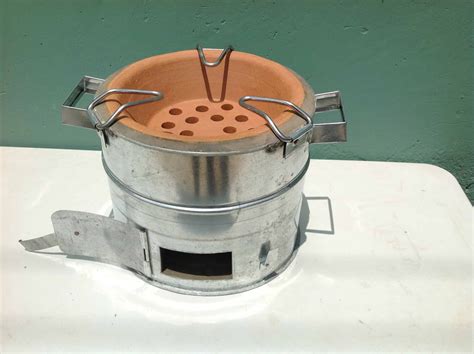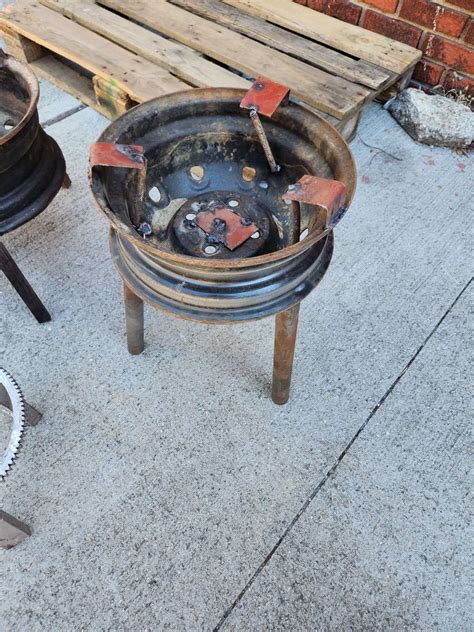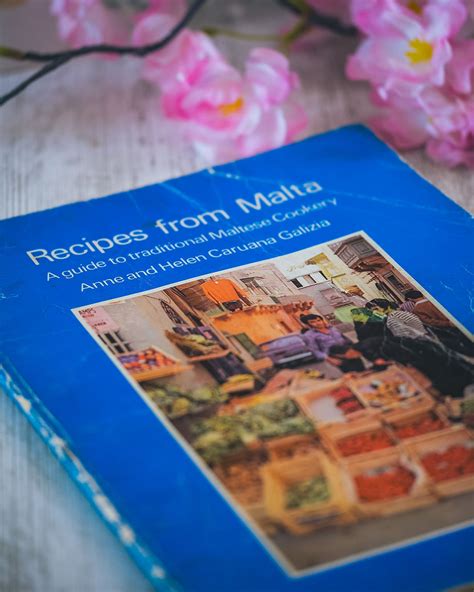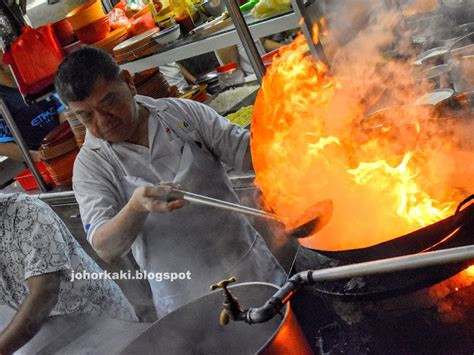Embark on a journey through time, where the echoes of culinary traditions whisper secrets of the past. Step into a world rich in flavor and tradition, where generations have gathered around the glowing embers to create culinary masterpieces. In this article, we dive deep into the realm of traditional cooking, unraveling the captivating story of an age-old culinary tool.
Discover the Enigmatic Hearth
Imagine a time when kitchens were not equipped with sleek, modern appliances. Instead, the heart of the home was a humble coal pot, a vessel that held the key to unforgettable taste experiences. With its rustic charm and enchanting allure, the coal pot became the centerpiece of every kitchen, a symbol of connection to the past and a gateway to the flavors of yesteryears.
Unraveling the Secrets
Behind the charred walls of the coal pot lies a world of mystery and mastery. It is within these soot-stained depths that flavors harmonize, and culinary alchemy takes place. The coal pot's unique design allows for an even distribution of heat, enhancing the textures and infusing dishes with a smoky essence. Passed down through generations, the knowledge of cooking with a coal pot is a treasure trove that deserves to be uncovered.
The Evolution of Traditional Culinary Methods

Culinary techniques have forever shaped the way we prepare and enjoy our meals. Throughout history, cultures from every corner of the globe have developed traditional cooking methods that reflect their unique environments and resources. One such method, which has captured the imagination of food enthusiasts for centuries, is the art of coal pot cooking.
The history of coal pot cooking is a fascinating journey through time, showcasing the ingenuity and resourcefulness of our ancestors. Prior to the advent of modern cooking appliances, communities relied on simple yet effective methods to prepare their meals. The coal pot, also known as a charcoal stove or cooking pot, emerged as a popular choice due to its versatility and efficiency.
- Cultural Significance: Coal pot cooking holds immense cultural significance, serving as a link to the past and preserving traditional culinary practices. It has been an integral part of community gatherings and festive celebrations, intertwining history, heritage, and culinary excellence.
- Primitive Origins: The origins of coal pot cooking can be traced back to primitive times when early humans discovered the power of fire. They soon realized that heating stones or clay vessels over an open flame could revolutionize their food preparation methods, making it more efficient and enhancing flavors.
- Resourceful Adaptations: As societies evolved, so did their cooking techniques. The coal pot underwent numerous modifications, incorporating advancements in design and materials. From basic earthenware pots to cast iron and stainless steel stoves, coal pot cooking adapted to the changing needs and preferences of different cultures.
- Ecological Sustainability: Coal pot cooking has always been inherently eco-friendly, relying on renewable resources such as charcoal or wood. This sustainable approach not only minimizes the ecological footprint but also adds a unique smoky flavor that has become synonymous with traditional coal pot cuisine.
- Contemporary Revival: While modern kitchen appliances have taken center stage in many households, the art of coal pot cooking continues to thrive in certain regions. Its revival is fueled by nostalgia, a desire to reconnect with culinary roots, and an appreciation for the distinct flavors and textures it imparts to dishes.
The history of coal pot cooking holds a treasure trove of timeless wisdom and cultural significance. Exploring its evolution not only allows us to appreciate the incredible ingenuity of our ancestors but also inspires us to preserve these traditional culinary techniques for generations to come.
Exploring the Origins and Cultural Significance
The exploration of the origins and cultural significance of traditional cooking practices offers a fascinating glimpse into the rich heritage and diverse traditions of culinary arts. This section delves into the historical roots and social importance of traditional cooking methods, shedding light on the deep connections between food, culture, and identity.
Understanding the origins of traditional cooking is like delving into a tapestry woven with threads of history, geography, and ancestral wisdom. Passed down through generations, these culinary practices are a testament to the ingenuity of our forebears and their deep reverence for sustenance and nourishment. Exploring the cultural significance of traditional cooking provides insights into the values, beliefs, and customs of different communities, offering a unique lens through which to appreciate the diversity and beauty of human civilization.
The Cultural Tapestry: Traditional cooking techniques and recipes often serve as a bridge between past and present, connecting modern generations to their ancestors and preserving cultural heritage. Through the skilled hands of cooks who have inherited traditional knowledge, the secrets of the past continue to be passed down, ensuring the survival of unique flavors, textures, and aromas that are inseparable from a community's identity.
A Celebration of Diversity: Traditional cooking represents a celebration of the world's cultural diversity, with each community infusing its unique flavors and ingredients into their dishes. From the complex spice blends of Indian cuisine to the delicate techniques of Japanese tea ceremonies, traditional cooking practices offer a kaleidoscope of tastes and techniques that reflect the creativity and ingenuity of human civilizations.
Preserving Intangible Heritage: Traditional cooking is more than just a means of preparing meals; it is a vehicle for preserving intangible heritage. By embracing traditional cooking methods, communities safeguard ancient knowledge, rituals, and stories that might otherwise fade away. Every dish prepared using traditional techniques carries within it a piece of history, connecting the present to the past and ensuring the continuity of cultural practices for future generations.
In conclusion, exploring the origins and cultural significance of traditional cooking provides a captivating journey that allows us to appreciate the depths of human ingenuity and the diversity of our global heritage. From unraveling the tapestry of history to celebrating cultural diversity and preserving intangible heritage, traditional cooking practices offer a profound connection to our past and a vibrant glimpse into the rich tapestry of human civilization.
How Does a Charcoal Stove Function?

In this section, we will explore the intricate workings of a traditional cooking device that relies on the power of burning charcoal. By delving into the mechanics behind a charcoal stove, we aim to uncover its underlying principles and shed light on how it produces heat for cooking. Without delving into specifics, let us embark on a journey that explores the fascinating inner workings of this ancient cooking tool.
The Combustion Process:
One of the key elements in understanding how a charcoal stove functions is comprehending the combustion process. When lit, the charcoal undergoes a chemical reaction with oxygen, known as oxidation, releasing heat in the process. This heat is then harnessed and utilized for cooking various dishes.
Fire Management:
Another crucial aspect that contributes to the successful operation of a charcoal stove is fire management. By controlling the amount of air that reaches the burning charcoal, it is possible to regulate the intensity of the flames and the amount of heat generated. This skillful control allows cooks to adjust the temperature inside the cooking vessel, ensuring optimal cooking conditions for different culinary endeavors.
Heat Transfer:
Understanding the principles of heat transfer is also essential in grasping how a charcoal stove operates. Once the heat is produced through combustion, it is transferred to the cooking vessel through conduction. The metal or clay material of the stove efficiently conducts the heat, evenly distributing it to the food being cooked. This enables ingredients to be cooked thoroughly and consistently.
Advantages and Limitations:
Lastly, it is important to consider the advantages and limitations of using a charcoal stove. While it offers the benefit of providing an intense and direct source of heat, allowing for precise cooking control, it also comes with certain drawbacks. Charcoal stoves require a constant supply of charcoal, and the process of cleaning and maintaining them can be time-consuming. Moreover, their use indoors can be potentially hazardous due to the emission of carbon monoxide.
In conclusion, comprehending the mechanisms that enable a charcoal stove to function is key to appreciating the traditional cooking methods it supports. By understanding the combustion process, mastering fire management, and grasping heat transfer principles, we can unlock the secrets of this remarkable cooking tool and truly appreciate its unique role in culinary traditions.
Revealing the Mechanics Behind Traditional Culinary Methods
In this section, we delve into the intricate processes and techniques that underlie the art of traditional cooking. By exploring the mechanics behind these time-honored methods, we gain a deeper understanding of the craftsmanship and ingenuity involved in creating culinary masterpieces.
Traditional cooking encompasses a rich tapestry of techniques that have been passed down through generations. These methods require a delicate balance of skill, precision, and an intimate knowledge of ingredients. From slow simmering to dry-heat cooking, traditional culinary practices employ a myriad of approaches to transform raw ingredients into dishes that are bursting with flavor and cultural significance.
One fundamental aspect of traditional cooking lies in the use of carefully selected tools and equipment. From the humble mortar and pestle to the complex mechanics of clay pot cooking, each utensil serves a purpose in maintaining the authenticity and enhancing the flavors of traditional dishes. These tools often possess unique characteristics that are specific to certain cuisines, contributing to the distinctiveness and diversity of traditional cooking around the world.
| Technique | Description |
|---|---|
| Braising | A slow-cooking method that combines both dry-heat and moisture, resulting in tender and flavorful meats and vegetables. |
| Steaming | A gentle cooking process that uses the heat and moisture of steam to cook food evenly while retaining its natural flavors and nutrients. |
| Fermentation | A natural preservation method that involves the breakdown of sugars and carbohydrates by microorganisms, resulting in unique flavors and textures. |
| Smoking | A technique that imparts a distinct smoky flavor to food by exposing it to low heat and fragrant wood chips or herbs. |
Understanding the mechanics behind traditional cooking allows us to appreciate the wisdom and tradition embedded in each dish. It provides us with a glimpse into the cultural heritage and values that have been preserved through generations. So, let us embark on a journey of exploration as we unveil the hidden mechanics that give traditional cooking its magical allure.
The Delightful Tastes of Charcoal Pot Cuisine

Experience a gastronomic journey like no other as we delve into the delectable world of charcoal pot cuisine. This unique cooking technique tantalizes taste buds with its exquisite flavors, offering a delightful blend of traditional and innovative dishes that will leave you craving for more.
One of the distinctive features of charcoal pot cuisine is the depth and richness it adds to the food. The smoky aroma infused during the cooking process imparts a unique character to each dish, transforming ordinary ingredients into extraordinary culinary masterpieces.
- Discover the harmonious blend of flavors in dishes prepared using a charcoal pot
- Indulge in the succulent meats, infused with smoky goodness
- Explore the vibrant array of vegetables, enhanced by the distinct taste of charcoal cooking
- Experience the tender textures and exquisite taste of seafood cooked over hot coals
Furthermore, the slow and steady cooking process of the charcoal pot ensures that flavors are intensified and ingredients are cooked to perfection. With each bite, you'll savor the marriage of textures and tastes, resulting in a truly memorable dining experience.
Whether you're a culinary enthusiast or simply looking to expand your palate, charcoal pot cuisine offers an extraordinary adventure for your taste buds. Immerse yourself in the exquisite flavors of this time-honored cooking method and discover a whole new world of gastronomic delight.
Exploring the Rich Flavors and Aromas of Authentic Cuisine
Embarking on a culinary journey through the world of traditional dishes means immersing yourself in a captivating realm where every bite yields a tapestry of tantalizing tastes and scintillating aromas. Discovering the essence of these ancient recipes requires delving deep into the intricate flavors that make them truly unique.
As you savor the distinctiveness of traditional cuisine, your palate becomes a canvas on which a symphony of flavors is painted. Whether it's the fiery spiciness of a piquant curry or the delicate sweetness of a perfectly caramelized dessert, each dish tells a story of exquisite culinary craftsmanship passed down through generations.
- Uncover the subtleties of seasoning: From the bold punch of a medley of fresh herbs to the subtle hint of a carefully balanced spice blend, traditional dishes rely on an artful combination of seasonings to create unforgettable flavor profiles.
- Indulge in the nuances of texture: The textures found in traditional cuisine are as diverse as the cultures that inspire them. Sink your teeth into the crisp exterior of a perfectly fried spring roll or revel in the velvety smoothness of a rich, creamy sauce. Each bite offers a tactile adventure.
- Explore the symphony of ingredients: Traditional dishes are often a harmonious blend of locally sourced ingredients, bringing together a tapestry of flavors that reflect the unique culinary traditions of a particular region. From the earthy flavors of root vegetables to the fresh tang of locally caught seafood, every ingredient plays a crucial role in crafting a memorable dish.
Rediscovering Time-Honored Delights: Authentic Recipes for Open Fire Cooking

Embark on a culinary journey as we delve into the realm of time-honored cooking techniques that have been passed down through generations. In this section, we will explore a selection of authentic recipes specifically crafted for the traditional coal pot method. Discover the secrets behind mouthwatering dishes that reflect the rich cultural heritage and flavors of the past.
Embracing the Legacy: These traditional recipes are a testament to the ingenuity and resourcefulness of our ancestors who relied on the humble coal pot to create delicious meals. As you dive into these treasured recipes, you will not only be immersing yourself in the art of open fire cooking but also connecting with a heritage deeply rooted in communal cooking experiences.
A Culinary Adventure: Prepare to be captivated by the tantalizing aromas and flavors that are brought to life through the magical combination of carefully selected ingredients and the gentle heat of the coal pot. From hearty stews to succulent grilled meats and aromatic side dishes, each recipe showcases the unique qualities of open fire cooking - resulting in a depth of flavor that cannot be replicated using modern kitchen appliances.
Indulge in the satisfying simplicity of recipes that stand the test of time, as we open up the treasure chest of Coal Pot traditional cooking and invite you to savor the charm of bygone days.
Discovering Authentic Dishes and Culinary Techniques
In this section, we embark on a journey to explore the rich tapestry of authentic dishes and cooking techniques that offer a window into diverse culinary traditions. With a focus on the cultural heritage and time-honored practices of different regions, we delve into the secrets passed down through generations.
Through our exploration, we uncover a myriad of unique flavors, textures, and aromas that define the essence of authentic cuisine. From the delicate art of layering spices to the mastery of slow cooking, each technique carries its own story, encapsulating the history and identity of a particular community.
We immerse ourselves in the exploration of traditional dishes that have withstood the test of time, providing insight into the distinct flavors and ingredients that make them truly authentic. From tantalizing street food classics to elaborate celebratory feasts, we celebrate the diversity and richness of global gastronomy.
- Unearthing long-forgotten cooking techniques and rediscovering their relevance in today's culinary landscape
- Exploring the ingredients unique to certain cultures and their role in shaping authentic dishes
- Highlighting the significance of preserving traditional cooking methods in the face of modern innovations
- Unveiling the stories behind legendary dishes and the rituals associated with their preparation
- Examining the role of regional variations in traditional recipes and the cultural significance they hold
By delving into the world of authentic dishes and culinary techniques, we unravel the hidden gems that lie within the culinary traditions of different cultures. Through this exploration, we gain a deeper appreciation for the craftsmanship, history, and cultural significance that underpin these timeless culinary creations.
Exploring the Health Benefits of Traditional Open-fire Cooking

When it comes to culinary traditions that have been passed down through generations, the art of cooking using a traditional coal pot holds a special place. This ancient cooking method, known for its long-lasting heat and unique flavors, not only brings a sense of nostalgia but also offers several health benefits.
Enhanced Nutritional Value: Coal pot cooking allows for slow and steady heat, which helps to retain the natural vitamins and minerals in the ingredients. Compared to modern cooking methods that often result in nutrient loss, the gentle heat of a coal pot helps to preserve the nutritional value of the food, ensuring that you receive the maximum health benefits from your meals.
Reduced Fat Intake: Cooking in a coal pot requires minimal or no additional oil, as the intense heat generated by the burning coal helps to naturally seal in the flavors of the ingredients. This means that you can enjoy delicious and flavorful dishes with reduced fat content, contributing to a healthier lifestyle and helping to manage weight.
Phenolic-rich Foods: When cooking with coal pots, the open-fire method results in the release of phenolic compounds from certain foods. These natural compounds have antioxidant properties and are known to have numerous health benefits, including reducing inflammation, improving digestion, and even protecting against certain types of cancers.
Enhanced Flavor Profile: The slow and steady heat generated by a coal pot allows the flavors of the ingredients to develop fully, resulting in rich and complex flavors that are often unmatched by other cooking methods. This not only enhances the taste of the food but also encourages the use of natural seasonings and herbs, further boosting the health benefits obtained from the ingredients.
In conclusion, traditional coal pot cooking brings with it a range of health benefits that are often overlooked in our modern, fast-paced world. Embracing this age-old cooking technique not only allows us to connect with our cultural heritage but also provides us with delicious and nutritious meals that contribute to our overall well-being.
Uncovering the Health Benefits of Time-Honored Culinary Practices
In this section, we will delve into the reasons why traditional cooking methods offer a multitude of nutritional advantages. Throughout generations, communities have developed and refined their cooking techniques to not only create flavorful dishes but also preserve and enhance the nutritional value of ingredients.
| Time-Honored Method | Nutritional Benefits |
|---|---|
| Fermentation | Promotes gut health, increases nutrient availability, and boosts food preservation. |
| Slow Cooking | Retains more nutrients and enhances the flavors of ingredients while tenderizing tough cuts of meat. |
| Steaming | Preserves water-soluble vitamins and minerals, ensuring maximum nutrient intake. |
| Sprouting | Increases the bioavailability of nutrients and decreases the content of certain antinutrients. |
| Seasonal Cooking | Provides a diverse range of nutrients due to the use of locally grown, fresh ingredients. |
By embracing these traditional cooking methods, we can unlock a world of nutritional benefits that contribute to overall well-being. Whether it's preserving probiotics through fermentation, enhancing nutrient absorption via slow cooking, or maximizing vitamin retention with steaming, our ancestors' culinary wisdom continues to enrich our diets and promote a healthier lifestyle.
Preserving the Mastery of Fire-Driven Cuisine

In this section, we embark on a journey to explore the rich heritage and techniques involved in the remarkable and age-old tradition of fire-driven cuisine. This culinary practice, which has weathered the test of time, encompasses a vast array of cooking methods and culinary customs passed down from one generation to another.
- The Perseverance of Traditional Techniques:
- Discover the time-honored techniques that have been preserved and perfected over centuries, defying the ephemeral trends of modern cooking.
- Unveil the subtle art of controlling and managing the intense heat generated by coal pots, ensuring a harmonious blend of flavors and textures.
- Explore the interplay between ingredients and the traditional tools used in coal pot cooking, showcasing the unparalleled skill and ingenuity of the culinary craftsmen.
- An Encounter with Culinary Cultural Heritage:
- Immerse yourself in the cultural significance and symbolism associated with this revered cooking method, delving into the captivating stories and traditions woven around it.
- Experience the vibrant tapestry of flavors and techniques shaped by diverse communities across the globe, each interpreting the art of coal pot cooking in their unique way.
- Unearth the narratives and rituals that accompany this ancient culinary practice, revealing its integral role in ceremonies, celebrations, and everyday life.
- The Sustainability of a Time-Honored Tradition:
- Delve into the ecological and sustainable aspects of coal pot cooking, understanding how this traditional method harnesses natural resources in a responsible and efficient manner.
- Discover the efforts being made to preserve and promote the art of coal pot cooking in the face of modernization, as communities strive to maintain a delicate balance between preserving cultural heritage and embracing contemporary culinary advancements.
- Explore initiatives aimed at safeguarding traditional techniques and passing them on to future generations, ensuring that this remarkable culinary heritage remains alive and cherished.
Embark on this fascinating exploration of coal pot cooking, where tradition, culture, and mastery intertwine to create a remarkable culinary world waiting to be discovered.
FAQ
What is the significance of the coal pot in traditional cooking?
In traditional cooking, the coal pot holds great significance as it is the soul of the kitchen. It is used to cook meals slowly and evenly, giving dishes a unique flavor. The coal pot also represents tradition and cultural heritage in many communities.
Are there any health benefits of cooking with a coal pot?
Cooking with a coal pot can have certain health benefits. The slow and even heat distribution helps retain the nutritional value of the food. Additionally, the use of coal in cooking helps create a smoky flavor, which can add depth to the taste of the dishes.
How does traditional cooking with a coal pot compare to modern cooking methods?
Traditional cooking with a coal pot differs from modern cooking methods in several ways. While modern methods rely on gas or electric stoves for quick heating, the coal pot provides slow and steady heat, allowing flavors to develop gradually. It also requires more patience and attention, but the result is often a unique and authentic taste.
Are there any challenges or disadvantages of using a coal pot for cooking?
Using a coal pot for cooking can present some challenges. It requires regular maintenance, such as cleaning and refilling with coal. Cooking with a coal pot can also be time-consuming as it takes longer to heat up compared to modern stoves. Additionally, the use of coal emits smoke, which can be a concern for indoor cooking.
Is traditional cooking with a coal pot still popular in modern times?
While modern cooking methods have gained popularity over the years, traditional cooking with a coal pot still holds its allure in many communities. It is often seen as a way to preserve cultural traditions and pass them on to future generations. However, its popularity may vary depending on the region and the availability of modern cooking appliances.



